Edge detection#
In clesperanto, multiple filters for edge-detection are implemented.
See also
import pyclesperanto_prototype as cle
from skimage.io import imread
import matplotlib.pyplot as plt
cle.select_device("RTX")
<gfx90c on Platform: AMD Accelerated Parallel Processing (2 refs)>
blobs = imread("../../data/blobs.tif")
blobs.shape
(254, 256)
cle.imshow(blobs)
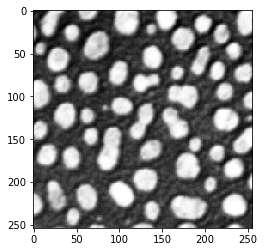
Sobel operator#
blobs_sobel = cle.sobel(blobs)
cle.imshow(blobs_sobel)
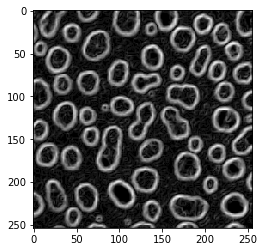
Laplace operator#
blobs_laplace = cle.laplace_box(blobs)
cle.imshow(blobs_laplace)
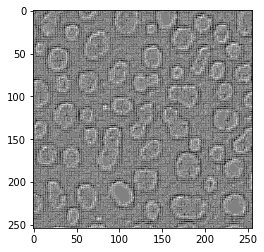
Laplacian of Gaussian#
Also kown as the Mexican hat filter
blobs_laplacian_of_gaussian = cle.laplace_box(cle.gaussian_blur(blobs, sigma_x=1, sigma_y=1))
cle.imshow(blobs_laplacian_of_gaussian)
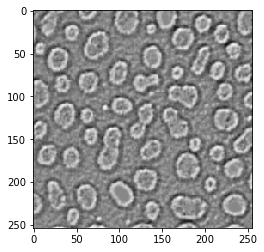
blobs_laplacian_of_gaussian = cle.laplace_box(cle.gaussian_blur(blobs, sigma_x=5, sigma_y=5))
cle.imshow(blobs_laplacian_of_gaussian)
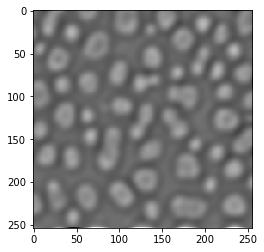
Local Variance filter#
blobs_edges = cle.variance_box(blobs, radius_x=5, radius_y=5)
cle.imshow(blobs_edges)
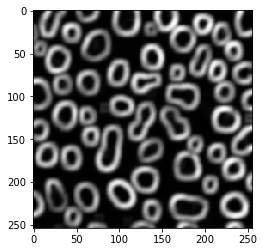
Local standard deviation#
… is just the square root of the local variance
blobs_edges = cle.standard_deviation_box(blobs, radius_x=5, radius_y=5)
cle.imshow(blobs_edges)
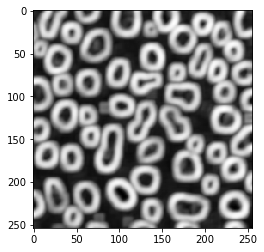
Edge detection is not edge enhancement#
Intuitively, one could apply an edge detection filter to enhance edges in images showing edges. Let’s try with an image showing membranes. It’s a 3D image btw.
image = imread("../../data/EM_C_6_c0.tif")
image.shape
(256, 256, 256)
cle.imshow(image[60])
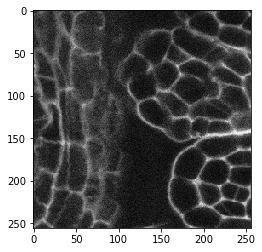
image_sobel = cle.sobel(image)
cle.imshow(image_sobel[60])
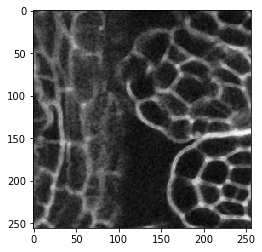
When looking very carefully, you may observe that the edges are a bit thicker in the second image. The edge detection filter detects two edges, the increasing signal side of the membrane and the decreasing signal on the opposite side. Let’s zoom:
fig, axs = plt.subplots(1, 2)
cle.imshow( image[60, 125:145, 135:155], plot=axs[0])
cle.imshow(cle.pull(image_sobel)[60, 125:145, 135:155], plot=axs[1])

Enhancing edges#
Thus, to enhance edges in a membrane image, other filters are more useful. Enhancement may for example mean making membranes thicker and potentially closing gaps.
Local standard deviation#
image_std = cle.standard_deviation_box(image, radius_x=5, radius_y=5, radius_z=5)
cle.imshow(image_std[60])
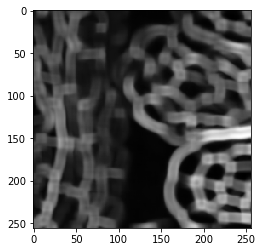
Local maximum#
image_max = cle.maximum_box(image, radius_x=5, radius_y=5, radius_z=5)
cle.imshow(image_max[60])

